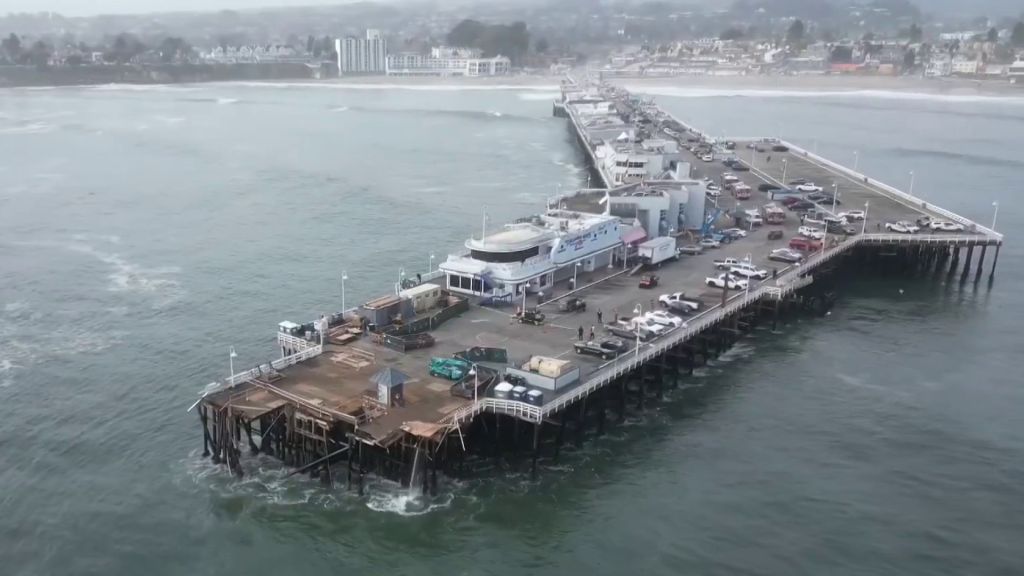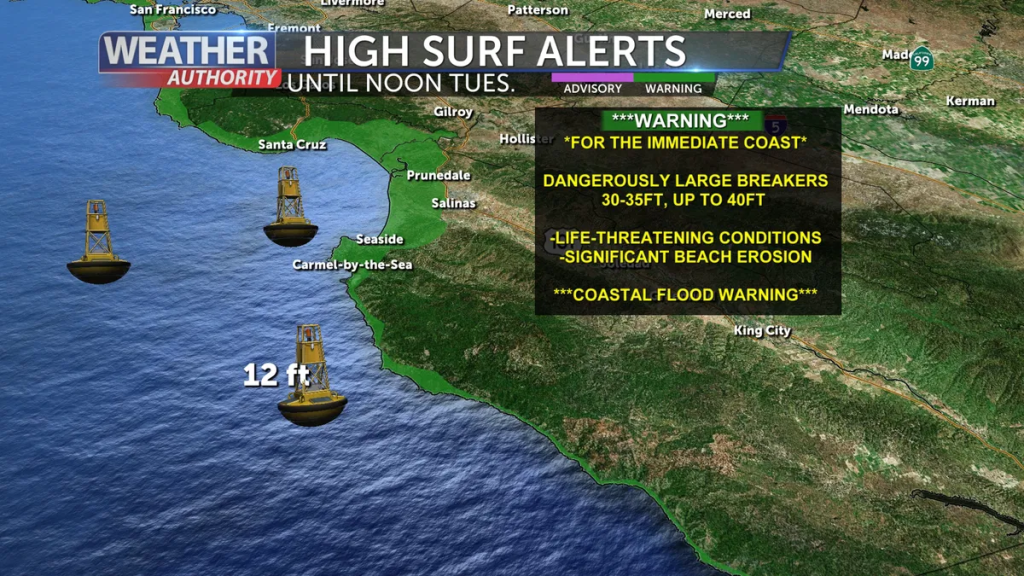A dramatic collapse rocked the historic Santa Cruz Wharf in California on Monday, December 18, when massive waves pummeled the coastline. This event, which sent three construction workers into the water, has sparked widespread questions such as, “Did the Santa Cruz Wharf just collapse?” and “Is Santa Cruz Pier destroyed?”
Here’s a detailed look at the collapse, its aftermath, and ongoing recovery efforts.
What Happened to the Santa Cruz Wharf?
Around 12:45 p.m., a 150-foot section at the end of the Santa Cruz Wharf collapsed into the Pacific Ocean. This portion, which was already closed to the public for repairs, included a restroom, part of the Dolphin Restaurant, and construction equipment.

Three workers—a city project manager and two engineers—were on the section when it gave way. Lifeguards rescued two workers from the ocean, while the third swam to safety. Fortunately, all three sustained only minor injuries and were treated at a local hospital.
Santa Cruz Wharf: A Historic Landmark
Built in 1914, the Santa Cruz Wharf spans 2,745 feet, making it the longest fully wooden pier in the Western Hemisphere. Over the decades, it has become a key attraction in Santa Cruz, offering restaurants, shops, and seasonal activities.
However, the collapsed section had been under repair as part of a $4 million restoration project following storm damage from previous years.
What Caused the Collapse?
The incident occurred amid a high surf warning issued by the National Weather Service, with waves measuring 30 to 40 feet and some sets reaching 60 feet. The intense wave action proved too much for the already compromised section of the wharf.
Santa Cruz Mayor Fred Keeley pointed to climate change as a contributing factor.
“Our coastline is increasingly unpredictable,” Keeley said. “This collapse is another reminder of the urgent challenges posed by our changing climate.”
Immediate Safety Measures
Following the collapse, officials evacuated the wharf and shut down nearby areas, including Main Beach, Cowell’s Beach, and the Santa Cruz Harbor. Heavy debris, including wooden pilings and construction equipment, floated in the water, creating significant hazards.
Mayor Keeley urged the public to stay away from the area.
“The debris in the ocean poses life-threatening risks. We strongly advise against approaching the shoreline or entering the water,” he said.
The Santa Cruz Wharf will remain closed indefinitely as structural assessments are conducted.
Santa Cruz Wharf Cam Offers Real-Time Updates
To keep the public informed, the Santa Cruz Wharf Cam provides live footage of the area. This tool has become essential for tracking recovery efforts and monitoring ongoing surf conditions.
Is the Santa Cruz Pier Destroyed?
While the entire Santa Cruz Wharf is not destroyed, the damage to its structure is severe. The collapsed section is completely lost, and the remaining portions are undergoing inspection to ensure their safety.
California Governor Gavin Newsom has been briefed on the situation, and state emergency officials are coordinating recovery and relief efforts with local agencies.
Comparisons to Past Storm Damage

The collapse mirrors the destruction of the Seacliff State Beach pier in January 2023. That pier, located south of Santa Cruz, was severely damaged by winter storms and ultimately deemed beyond repair.
Local business owners like Rose Ann Mazzone, who operates Bonnie’s Gifts on the wharf, expressed concern over the growing vulnerability of the landmark.
“We’ve always worried about the end of the pier. It’s taken a beating from storms before, but this is the worst damage we’ve ever seen,” Mazzone said.
Santa Cruz Wharf Restoration Focus
The focus now shifts to recovery and restoration. Officials are working to assess the damage, remove debris, and ensure public safety. However, with storm conditions persisting, additional damage remains a concern.
Residents and visitors are urged to avoid the coastline and steer clear of any debris that may wash ashore.
The Santa Cruz collapse highlights the increasing risks posed by extreme weather events along California’s coastline. As a historic and cultural icon, the wharf holds a special place in the hearts of locals and tourists alike. Its future, however, depends on the city’s ability to rebuild and fortify the structure against the relentless forces of nature.


